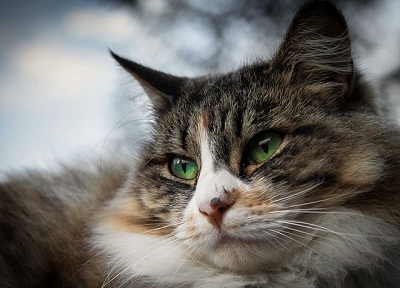Symptoms of Diabetes in Cats
Symptoms of Diabetes in Cats
Diabetes in cats usually takes one of the two forms – insulin dependent diabetes mellitus (IDDM) and non-insulin dependent diabetes mellitus (NIDDM). No matter what form of diabetes a cat gets, it represents a serious medical condition that requires action. For that reason, it is crucial to spot symptoms of diabetes in cats on time. According to feline experts, obese cats are at the highest risk when it comes to diabetes. However, many older cats are at risk, as well as cats with certain medical condition such as chronic pancreatitis, hyperthyroidism, Cushing’s disease, and so on. Certain breeds are also prone to this condition, like Burmese cats. Surprisingly, male cats are at higher risk to develop diabetes than females. Even though feline experts are not quite sure what causes diabetes in cats, they all agree that maintaining an optimal weight of a cat can help. They recommend feeding cats mainly with wet food. Dry food is good for dental health, but it contains a lot of carbohydrates that can lead to obesity. Once a cat is diagnosed with diabetes, control of their sugar level should be a lifelong responsibility of her owners. To decrease the risk of developing this health condition, we can offer our cat a diet with more fiber and less carbohydrates. The meals should follow a cat’s daily need after calories. Indoor cats should have more playing sessions and interesting environment that will keep her happy and healthy. To find out more about the symptoms of diabetes in cats and how to recognize them, the article “Diabetes in Cats – Causes, Symptoms and Treatment” offers us the following list.
Symptoms of Diabetes in Cats
1. Increased urination (polyuria) – Hyperglycemia (high blood glucose) and ketoacidosis lead to increased urine output as the kidneys remove excess glucose
and ketones from the blood via the urine. Ketoacidosis develops when the body looks for alternate sources of fuel and breaks down fat (and muscle) for
energy. The breakdown of fat produces waste products called ketones, which are removed from the body via increased urine production.2. Increased thirst (polydipsia) – The increase in urination leads to excess water loss, so your cat tries to compensate by drinking more water.
3. Increased appetite (polyphagia) – Because the glucose isn’t able to reach the cells to provide the energy the body tries to refuel by eating more food.
4. Weight loss – Despite an increased appetite, your cat loses weight as his body starts to use fat and muscle as an alternate energy source.In addition to the four classic signs of diabetes, diabetic cats may also experience the following symptoms:
– Vomiting – Diabetes can cause vomiting in a number of ways. Hyperglycemia or low blood sugar levels (hypoglycemia), gastroparesis and Ketoacidosis can all
cause nausea in diabetic cats.– Weakness in hind legs – Neuropathy can affect the nerves of the hind legs due to increased blood glucose levels. Weakness can develop and left untreated
can progress to paralysis.– Fruity smelling breath – In cats who develop ketoacidosis, a by-product of fat metabolism is acetone, which is responsible for the sweet, fruity smell on
the breath.– Dehydration – Due to the increase in urination caused by the kidneys trying to remove excess glucose from the blood.
– Poor coat condition (dry/dull coat, dandruff).
Even though diabetes in cats represents a lifelong illness, many cats with diabetes live a happy and long life. To help a cat cope well with this medical issue, we need to cooperate with veterinarians and keep their condition under control. Regular checkups and proper diet can help a cat live long and content life.










